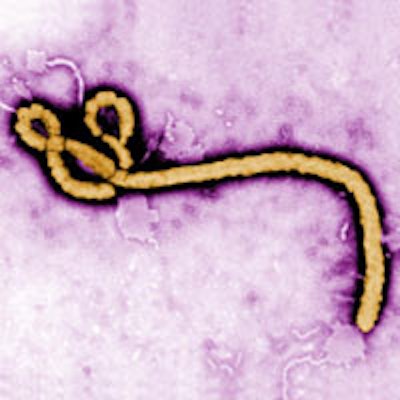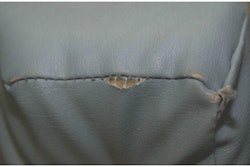
Radiologists from the U.S. National Institutes of Health (NIH) and Emory University have outlined a series of recommendations in a special report published online November 18 in Radiology to help radiology departments and imaging facilities prepare for Ebola patients.
Even though a small number of radiology staff may be involved in the care of Ebola patients, the report emphasizes that technologists should be educated about isolation room procedures and shown how to use personal protective equipment. Maintaining communication is also imperative (Radiology, November 18, 2014).
"Clear and frequent communication with the healthcare staff is essential during this time of heightened public concern and understandable caution," wrote co-authors Dr. Carolyn Meltzer, associate dean at Emory University School of Medicine, and Dr. David Bluemke, PhD, director of the department of radiology and imaging sciences at the NIH Clinical Center.
Massive outbreak
According to the U.S. Centers for Disease Control and Prevention (CDC), some 4,900 people in West Africa have died due to infection with the Ebola virus. The disease is spread through direct contact with blood or other body fluids from a live or deceased infected individual, and it can also be contracted from objects contaminated with fluids or secretions from a symptomatic patient.
Until this week, healthcare providers were successful in treating the few Ebola patients who have come to the U.S. On Monday, Dr. Martin Salia, a surgeon who contracted Ebola in his native Sierra Leone, died after being treated over the weekend at Nebraska Medical Center in Omaha.
Three other U.S. sites are involved in treating Ebola patients: Emory University Hospital in Atlanta; the NIH in Bethesda, MD; and St. Patrick Hospital in Missoula, MT. Each facility was chosen, in part, because of its specialized isolation rooms and staff trained to handle Ebola.
Imaging's contribution
Portable x-ray and ultrasound scanners have been used in biocontainment units to assess Ebola patients or rule out other diseases. So far, MRI, CT, and PET have not been found to have clinical value for patients with Ebola.
"Therefore, advanced imaging outside of the isolation room is to be avoided unless absolutely necessary due to the risk of exposure of other patients and staff," wrote Bluemke and Meltzer.
Radiology departments should develop standard operating procedures for performing imaging procedures in isolation units and "work with hospital infection control staff to apply standard hospital policies to the radiology department," they emphasized.
Up close and personal
Bluemke and Meltzer cited two approaches for imaging patients with Ebola. In one case, technologists with portable x-ray or ultrasound units would assist medical staff in the room with Ebola patients. In the second situation, technologists could look through the glass from an adjacent room and supervise a nurse or caregiver using the portable x-ray or ultrasound.
"For either approach, it is essential that sites perform mock preparations to enhance the safety of personnel involved in the imaging procedures," the authors wrote, and "close cooperation" between the technologist and the isolation unit nurse is essential.
They recommend that general x-ray procedures be conducted in the isolation room, rather than transporting an Ebola patient to the radiology department, to avoid unnecessarily exposing other staff to the virus.
Among other reasons, MRI and CT rooms are unsuitable for Ebola patients because small crevices in the gantry table and moving parts may retain contagious body fluids. The disinfection of imaging rooms requires many hours and may prohibit diagnostic treatment of other patients in the facility.
The authors also mentioned the service staff and engineers who work on the equipment. If service engineers see any liquids or contaminants, they should immediately stop their work and inform radiology personnel of their observations.
The critical factor is "clear and frequent communication" with all healthcare staff during this time of "heightened public concern and understandable caution," Bluemke and Meltzer wrote.
To accomplish that goal, Emory University Hospital has held open town-hall information sessions and distributed standardized screening protocols to its staff.



















